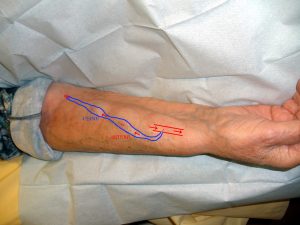
Hemodialysis catheters are medical devices used to provide access to the bloodstream during hemodialysis treatment. Hemodialysis is a medical treatment used to remove waste and excess fluid from the blood in patients with kidney failure. Hemodialysis catheters are inserted into a large vein, typically in the neck, chest, or groin, and are used to transport blood to and from the hemodialysis machine. The catheter consists of a flexible tube with two or three lumens, which allow blood to flow in and out of the body. The lumens are usually color-coded to prevent confusion. The global hemodialysis catheters market size was valued at $736 million in 2020 and expected to reach $1,163 million in 2030, at a CAGR 4.66% from 2021 to 2030.
There are different types of hemodialysis catheters, including tunneled catheters and non-tunneled catheters. Tunneled catheters are surgically implanted under the skin and are used for long-term hemodialysis treatment. Non-tunneled catheters, also known as temporary catheters, are inserted through the skin and are used for short-term hemodialysis treatment.
Hemodialysis catheters require special care and maintenance to prevent infection and other complications. Patients must keep the catheter site clean and dry and follow strict hand hygiene practices. In addition, healthcare providers must follow strict protocols for catheter insertion, use, and removal to prevent infection and other complications.
While hemodialysis catheters are generally safe and effective, they do carry risks, including infection, blood clots, and damage to blood vessels. Therefore, healthcare providers will typically consider other options, such as fistulas or grafts, before using a hemodialysis catheter, especially for long-term treatment.
Download Free Sample PDF:
https://www.alliedmarketresearch.com/request-sample/2742
There are several types of catheters used for hemodialysis, including tunneled catheters and non-tunneled catheters.
Tunneled catheters, also known as cuffed catheters, are long-term catheters that are surgically implanted under the skin. The catheter has a cuff that is secured to the tissue underneath the skin, which helps to prevent infection and stabilize the catheter. The other end of the catheter extends outside the body and is used to connect to the hemodialysis machine.
Non-tunneled catheters, also known as temporary catheters, are inserted through the skin and are used for short-term hemodialysis treatment. These catheters can be inserted quickly, but they are typically less stable than tunneled catheters and may require replacement more frequently.
Both types of catheters are typically inserted into a large vein in the neck, chest, or groin, and have multiple lumens to allow blood to flow in and out of the body during hemodialysis treatment.
The choice of catheter depends on several factors, including the patient’s medical history, the duration of hemodialysis treatment, and the patient’s overall health. In general, healthcare providers will try to avoid using catheters for long-term hemodialysis treatment, as they carry a higher risk of infection and other complications compared to other types of access, such as arteriovenous fistulas or grafts.
While hemodialysis catheters can provide life-saving treatment for patients with kidney failure, they do carry several risks and limitations, including:
- Infection: Hemodialysis catheters can increase the risk of infection, which can be life-threatening for patients with weakened immune systems. Infection can occur at the catheter site or can spread to the bloodstream, leading to sepsis.
- Thrombosis: Hemodialysis catheters can increase the risk of blood clots, which can obstruct blood flow and damage blood vessels. This can lead to reduced dialysis efficiency, reduced blood flow to the affected area, or even the need for emergency surgery.
- Stenosis: Hemodialysis catheters can cause stenosis, or narrowing of the blood vessels, which can reduce blood flow and require additional interventions to treat.
- Limited use: Hemodialysis catheters are typically reserved for short-term or emergency use, as long-term use increases the risk of infection, thrombosis, and other complications. Patients who require long-term hemodialysis treatment are typically encouraged to consider other access options, such as arteriovenous fistulas or grafts.
- Access-related costs: Hemodialysis catheters can be costly and require frequent replacement, which can add to the overall cost of hemodialysis treatment.
In summary, while hemodialysis catheters can be an effective way to provide temporary access to the bloodstream during hemodialysis treatment, they carry risks and limitations that can impact patient outcomes and quality of life. Therefore, healthcare providers will typically consider other options, such as fistulas or grafts, before using a hemodialysis catheter, especially for long-term treatment.
Contact:
David Correa
USA/Canada (Toll Free): +1-800-792-5285, +1-503-894-6022

